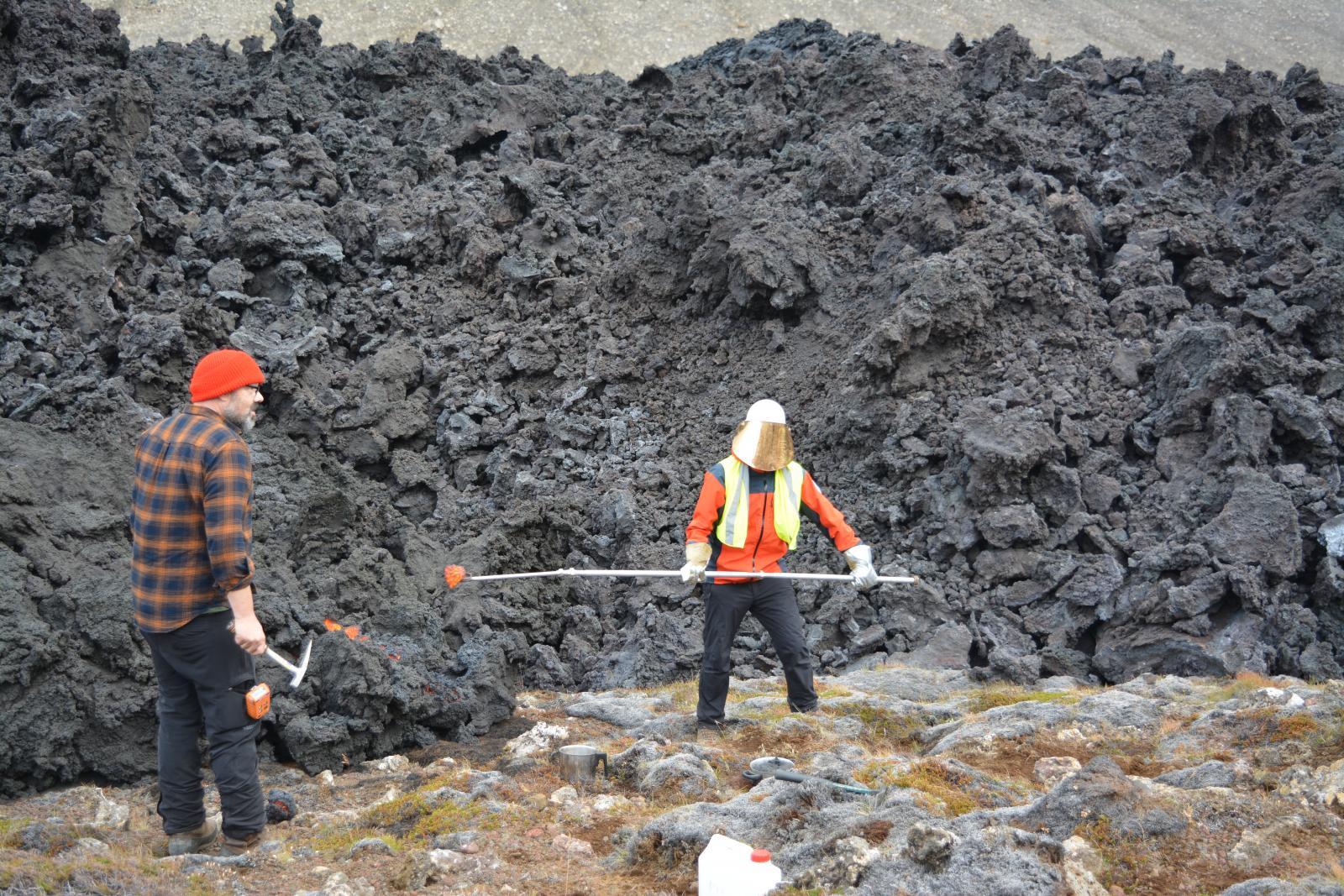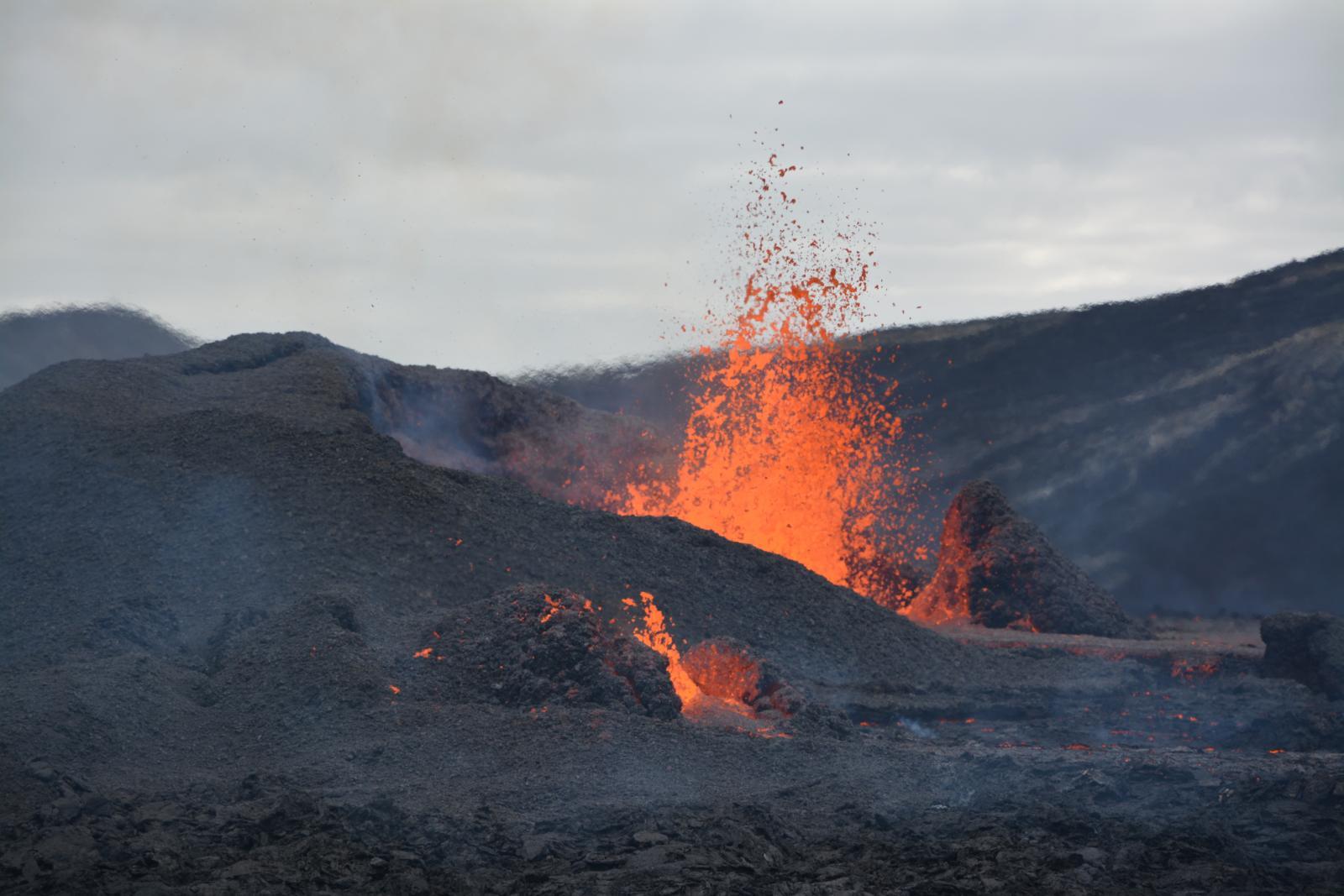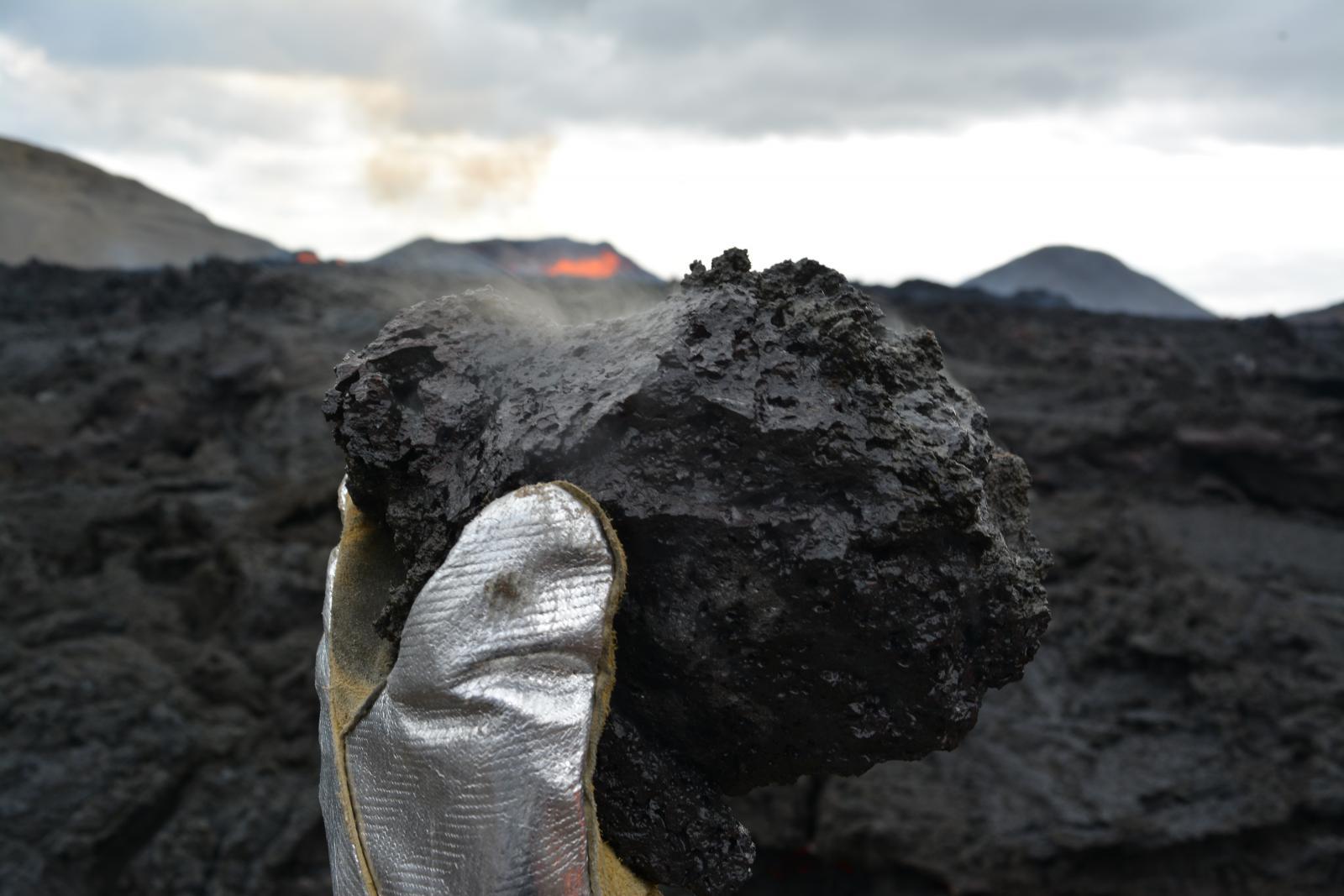Topic
A scientist brings hot lava samples from Iceland to Brno
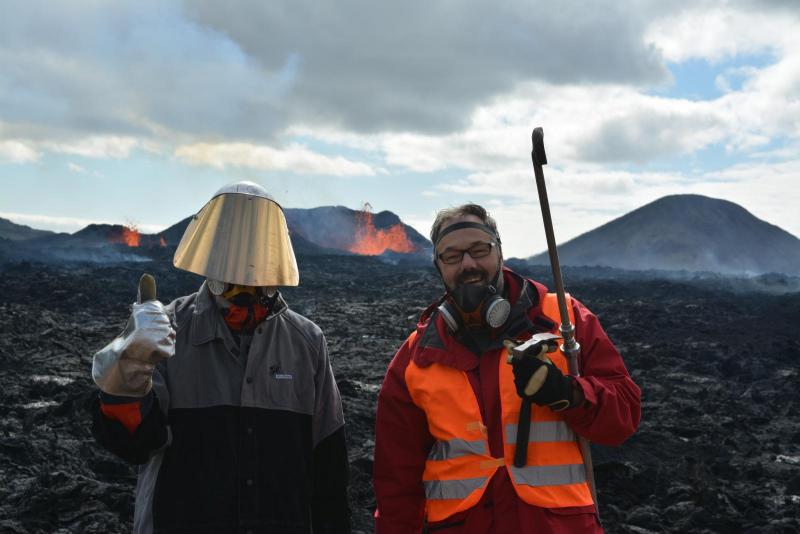
When information about a new erupting volcano arrived from Iceland on 3 August, geologist Lukáš Krmíček did not wait a minute. He contacted his foreign colleagues and a week later, they were already planning together, on-site, how and from where to collect hot lava. Accompanied by rescuers and equipped with special gear, they headed to the Meradalir volcano. While tourists could observe the fiery show from a distant hill, the BUT scientist collected the molten magma. He brought the still hot samples back to Brno this week.
Why did the eruption occur? What depth does the magma come from? What to expect in the future? While the first two questions may interest only scientists, the third has been on the minds of every Icelander lately. After 800 years of calm, a volcanic active period is likely beginning, right on the Reykjanes peninsula, where the majority of the Icelandic population lives. Experts on volcanic activity want to better understand volcanoes to predict more accurately what is coming.
"My task was quite adventurous; I was collecting samples of flowing lava and then cooling them. The temperature of such lava is well over a thousand degrees. I was wearing a vulcanology suit, a head shield, and had a special sampling rod with me," describes Lukáš Krmíček from the Faculty of Civil Engineering at BUT his recent experience. Thanks to the research, he reached places where entry is prohibited for tourists. However, he was under the supervision of rescuers and also colleagues Thor Thordarson from the University of Iceland and Valentin Troll from the Uppsala University in Sweden.
VOLCANO LIVE, KILLER VOLCANO
"Professor Troll monitored the concentrations of volcanic gases in my surroundings, which include carbon dioxide and sulphur dioxide. These gases can be really dangerous and have previously caused deaths, such as in 1783 during the eruption of the Laki volcano, which caused the death of up to a quarter of the island's population. As a result of the eruption, Europe experienced a very cool summer and crop failure, leading to famine and, due to social unrest, the French Revolution," the scientist points out the hidden connection.
The volcano is under the scrutiny of scientists who measure the speed and direction of lava flow, flying over it with a drone. Webcams broadcast a live view of the volcano and tourists take unforgettable snapshots from a nearby location. According to fresh Professor Krmíček, tourists sometimes start descending closer to the volcano, where they are especially at risk of suffocation by carbon dioxide. The inconspicuous killer fills the valley and without proper equipment can become fatal.
It is also not recommended to walk on freshly solidified lava crust, as Krmíček himself experienced firsthand: "I went to explore the terrain around the volcano's already solidified edge from the 2021 lava flow. While walking on a thin layer of cooled lava, I fell into a small lava cave. I cut my hand on the so-called volcanic glass, which is very sharp. Fortunately, it was nothing serious."
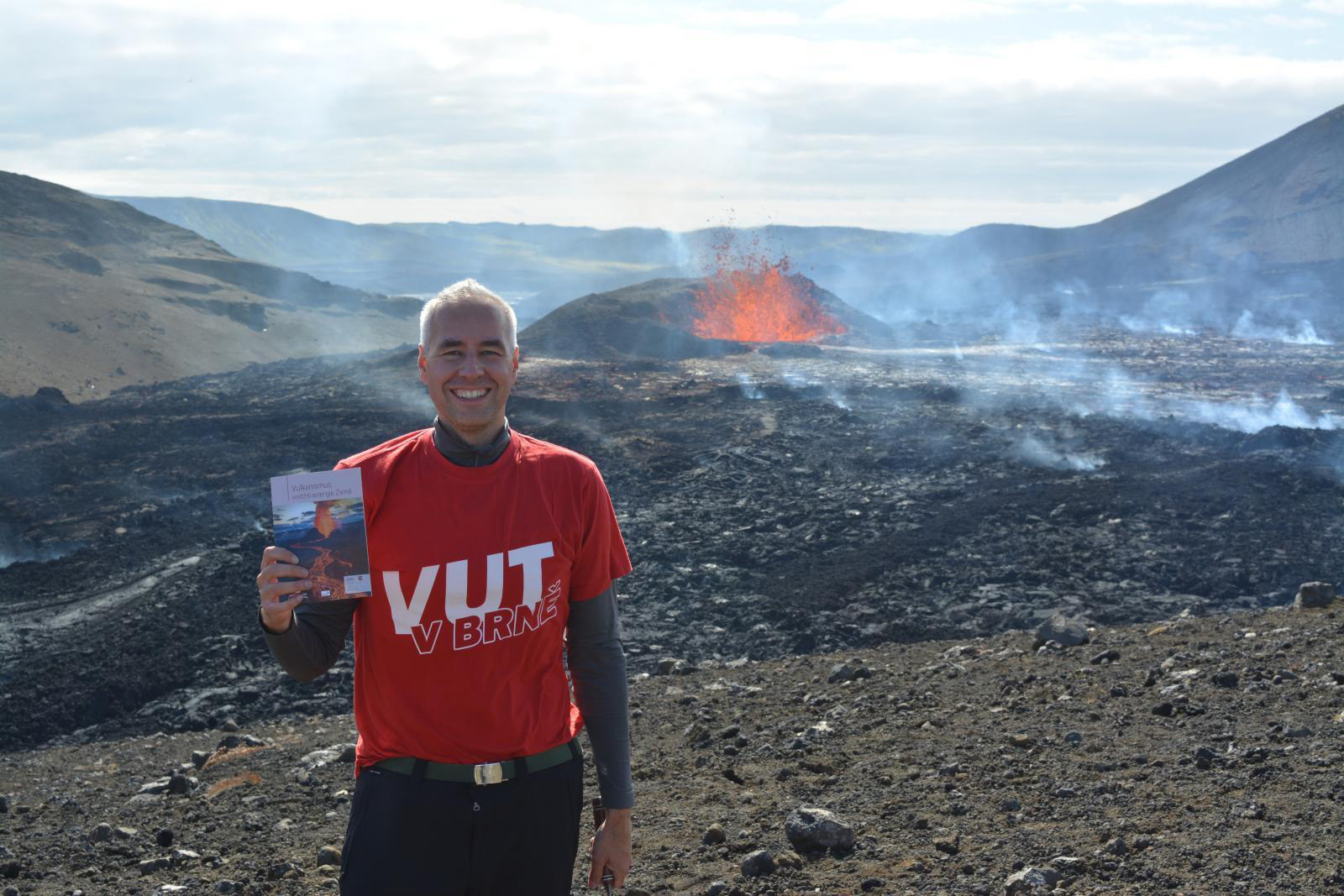
LAVA AS THE EARTH’S FINGERPRINT
Despite minor setbacks and the fact that the volcano forced them to retreat several times, the scientists succeeded in collecting the lava. Hot lava is places in a steel bucket with water, which starts to boil immediately. While the sample on the surface is already cool, the temperature inside remains quite high for a long time.
The next part of the research will involve studying the samples, with the help of Lukáš Krmíček's colleagues from the Faculty of Chemistry at BUT, for example. "We will partially cut them because I need to obtain a so-called polished hin section; it must be thin for observation under a microscope so that I can see the individual minerals. I will also crush them into fine powder, and we will further analyse the isotopic composition. We will separate elements such as strontium or lead," explains the geologist.
The samples carry a kind of fingerprint, a unique piece of information about which elements and at what depth the magma originated. While the deepest borehole reached about 12 kilometres below the surface, the source of Icelandic magmas may lie in depths of hundreds of kilometres into the centre of the Earth. This is a unique opportunity for scientists to study the Earth's mantle.
(tk)
The weakest dies, the rest continues to grow
Unique solution to rid houses of mould. Now patented
Conductive materials from FCE to ground buildings and warm up roads
Microplastics in drinking water will increase
He is interested in how high-strength steel wears out. For his research, the doctoral student from FCE BUT also received a scholarship for foreign students
